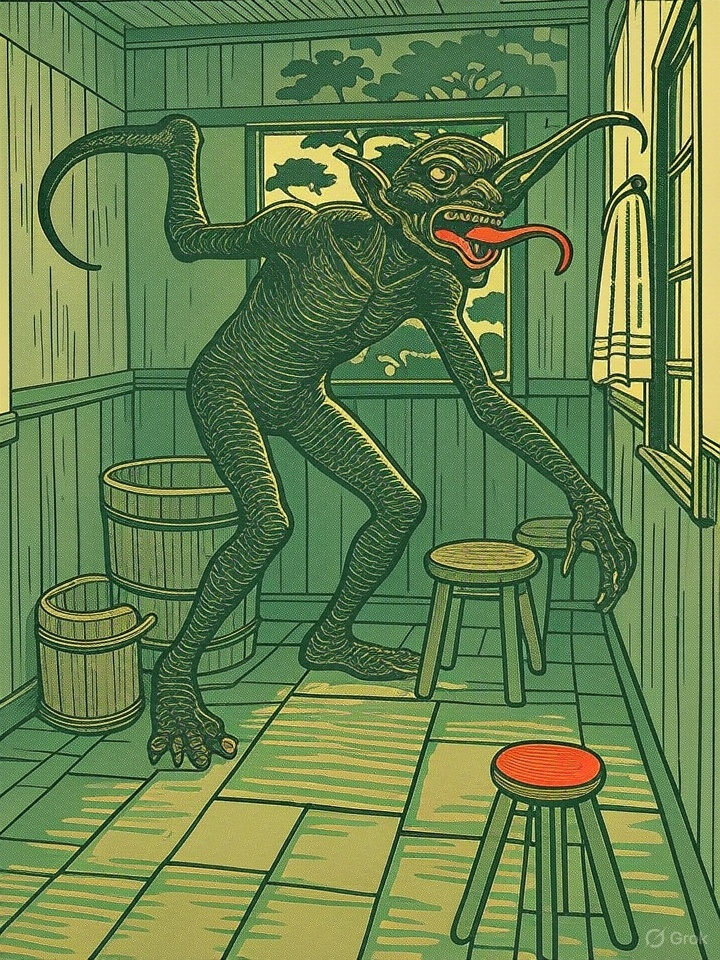Name Meaning
Akaname (垢嘗) is one of the more bizarre and unsettling yōkai from Japanese folklore, known for its filthy habits and grotesque appearance. Its name literally means “filth licker”, and it embodies the fears and superstitions surrounding uncleanliness in the home.
- Aka (垢) = Grime, filth
- Name (嘗) = To lick or taste → “Grime-Licker” or “Filth-Licker”
Origin
- Described in Edo-period yōkai scrolls like Toriyama Sekien’s Gazu Hyakki Yagyō.
- Considered a cautionary figure to encourage cleanliness, especially in places like bathhouses, toilets, and bathrooms.
Appearance
- A gaunt, goblin-like creature with long limbs.
- Often shown with wild hair, sharp claws, and a long, sticky tongue.
- Its skin may be reddish or mottled, and its expression is impish or sinister.
- Moves on all fours and lurks in damp, dirty corners.
Behavior
- Emerges at night, especially in unclean bathrooms or washrooms.
- Uses its long tongue to lick up the grime, soap scum, mold, and filth left behind.
- Does not harm humans directly but is considered a bad omen—its presence means the place is shamefully dirty.
Symbolism
- Represents the dangers of neglecting cleanliness, especially in a culture that values purification and ritual hygiene.
- A supernatural version of “clean up your mess or the monsters will come.”
- A rare example of a yōkai that’s more gross than dangerous—but still spiritually significant.
In Pop Culture
- Akaname has appeared in anime, manga, and games as a gross but memorable monster, often with a comedic or horror twist.
- Its long tongue and night-creeping habits make it visually iconic.



